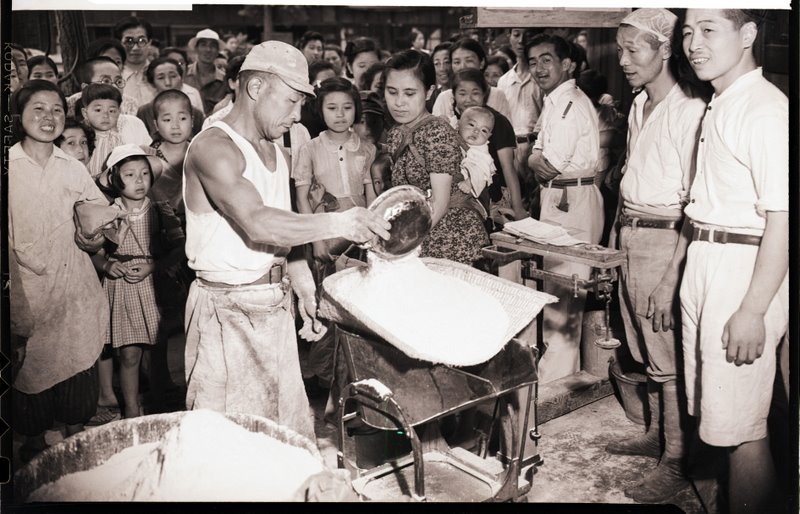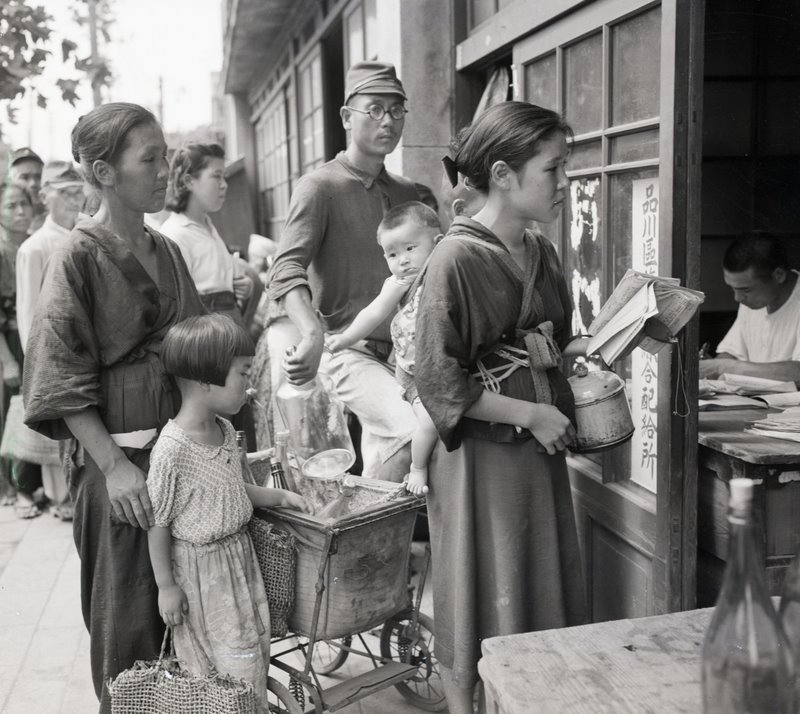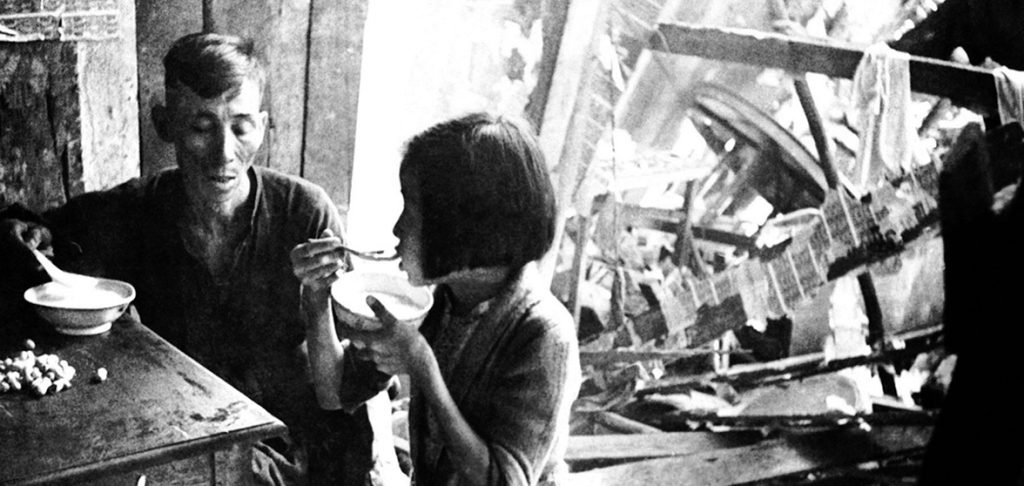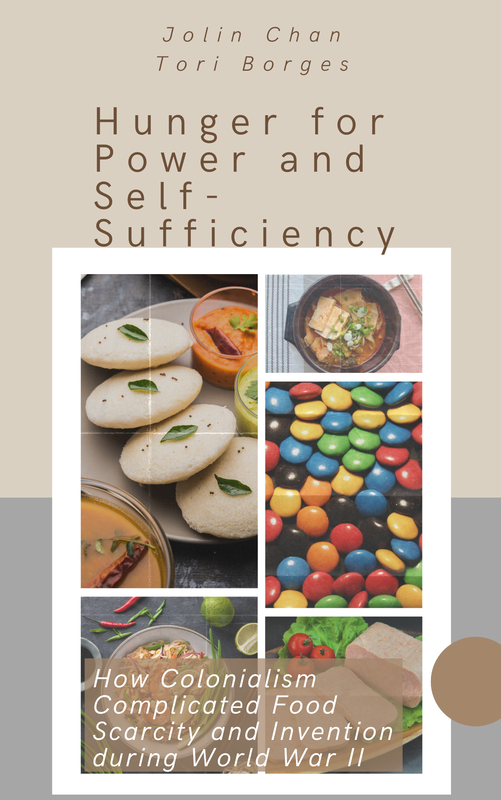- Home
- Stories
-
Internship
- Summer 2024 Internship
- Summer 2023 Internship
- Fall 2022 Internship
- Summer 2022 Internship
- Summer 2021 Internship
- Fall 2020- Spring 2021 Internship
- Summer 2020 Internship
- Fall 2019 Internship
- Summer 2019 Internship >
- School Year 2018-2019 Internship
- Summer 2018 Internship >
- Fall 2017 Internship
- Summer 2017 Internship >
- Books
- Archives
-
Resource Page
-
Supplementary Research Guides
>
- Unit 731 - Guide >
-
Philippines' Resistance - Guide
>
- Philippines World War II Timeline
- The Japanese Invasion & Conquest of the Philippines
- Bataan Death March
- Formation of Underground Philippines Resistance
- Supplies of the Guerrilla Fighters
- The Hukbalahap
- Hunter's ROTC
- Marking's Guerrillas
- United States Army Forces in the Philippines of Northern Luzon (USAFIP-NL)
- The Aetas
- Chinese and Filipino-Chinese Nationalist Guerrilla Units
- The Female Faces of the Philippine Guerrillas
- Rising Sun Flag - Guide >
- Pinay Guerrilleras - Guide >
- Fall of Singapore - Guide >
- Three Years and Eight Months - Guide >
- Siamese Sovereignty - Guide >
- The Khabarovsk War Crimes Trial - Guide >
- Unit 731 Cover-up : The Operation Paperclip of the East - Guide >
- Marutas of Unit 731 - Guide >
- Prince Konoe Memoir - Guide >
- Competing Empires in Burma - Guide >
- Battle of Shanghai - Guide >
- Ishi Shiro - Guide >
- Taiwan The Israel of the East - Guide >
- Seeking Justice for Biological Warfare Victims of Unit 731 - Guide >
- Rice and Revolution - Guide >
- Clash of Empires - Guide >
-
Hunger for Power and Self-SufficiencyI - Guide
>
- The Influence of War Rations on Post-War Culinary Transformations
- How World War II Complicated Food Scarcity and Invention
- American Military Innovations
- Government-Sponsored Food Inventions in Europe during World War II
- Feeding the Army: The Adaptation of Japanese Military Cuisine and Its Impact on the Philippines
- Mixed Dishes: Culinary Innovations Driven by Necessity and Food Scarcity
-
Denial A Quick Look of History of Comfort Women and Present Days’ Complication - Guide
>
- The Comfort Women System and the Fight for Recognition
- The Role of Activism and International Pressure
- The Controversy over Japanese History Textbooks
- The Sonyŏsang Statue and the Symbolism of Public Memorials
- Activism and Support from Japanese Citizens
- The Future of Comfort Women Memorials and Education
- Echoes of Empire: The Power of Japanese Propaganda - Guide >
- Lesson Plans >
-
Supplementary Research Guides
>
Japanese Food Inventions
Japan grappled with widespread food insecurity and deprivation due to its previous dependence on imports and the challenges posed by Allied blockades. During the war, the Japanese government often imposed severe rationing on feeding their army, to the extent that civilians faced starvation. The prioritization of feeding soldiers came at a high cost to civilians, resulting in inflation, extreme rationing, monopolization of basic foodstuffs, and ineffective policies. The government monopolized staple ingredients in the Japanese diet, such as rice and barley, and implemented a rationing system prioritizing the military. The Japanese government's mission to ascend the global hierarchy of power led it to rely on its military, invasions, and conquests throughout Asia. However, this determination carried a heavy toll on its civilian population.
In contrast, military personnel rarely encountered the same levels of starvation and deprivation experienced by civilians. The majority of the government's efforts were directed toward supporting soldiers, leaving civilians to fend for themselves and make do with what remained. Even before the war, soldiers received both larger quantities and higher-quality food.
In contrast, military personnel rarely encountered the same levels of starvation and deprivation experienced by civilians. The majority of the government's efforts were directed toward supporting soldiers, leaving civilians to fend for themselves and make do with what remained. Even before the war, soldiers received both larger quantities and higher-quality food.
The Japanese government placed significant emphasis on feeding the army, recognizing the crucial role of nutrition in ensuring a successful outcome on the battlefield and beyond. The United States, during wartime, had a strong focus on nutritional research and military food innovations, and Japan followed a similar approach.
Starting from World War I, Japan initiated an extensive process of revamping the military diet. Adequately feeding soldiers necessitated new dishes and techniques that deviated from the traditional Japanese diet, predominantly rice-based. While civilians were compelled to find rice substitutes, soldiers consumed protein-rich dishes like Japanese curry, beef stew, and oyakodon (a chicken and egg dish served over rice) since the early 1930s.
Menus centered on hearty, calorie-dense, and high-protein meals to sustain soldiers. This led to the "de-Japanization" of the food, with strong foreign influences, particularly from Western and Chinese cuisine, aimed at creating protein-packed meals that would support them during rigorous training and combat. Western and Chinese cooking techniques, such as stewing, pan-frying, and deep-frying, introduced new ways to nourish the troops. Soldiers were introduced to dishes like curries, croquettes, spaghetti, sandwiches, and more. However, a more typical Japanese-style meal for soldiers might consist of rice, miso soup, tsukemono (pickles), and a few other side dishes.
Starting from World War I, Japan initiated an extensive process of revamping the military diet. Adequately feeding soldiers necessitated new dishes and techniques that deviated from the traditional Japanese diet, predominantly rice-based. While civilians were compelled to find rice substitutes, soldiers consumed protein-rich dishes like Japanese curry, beef stew, and oyakodon (a chicken and egg dish served over rice) since the early 1930s.
Menus centered on hearty, calorie-dense, and high-protein meals to sustain soldiers. This led to the "de-Japanization" of the food, with strong foreign influences, particularly from Western and Chinese cuisine, aimed at creating protein-packed meals that would support them during rigorous training and combat. Western and Chinese cooking techniques, such as stewing, pan-frying, and deep-frying, introduced new ways to nourish the troops. Soldiers were introduced to dishes like curries, croquettes, spaghetti, sandwiches, and more. However, a more typical Japanese-style meal for soldiers might consist of rice, miso soup, tsukemono (pickles), and a few other side dishes.
At the heart of these menus was an emphasis on foreign techniques to address the needs of the army. Adopting foreign influences enabled the military to consume inexpensive yet satisfying meals. Breading and frying food in oil made it easy to increase the caloric content of a dish, while ingredients like potatoes, squash, and flour served as more accessible carbohydrates, capable of replacing rice. Stews and curry powder masked the taste of low-quality meat and fish.
Regional differences also posed a challenge. Japanese cuisine varies from city to city, and soldiers from different regions had distinct dietary preferences, especially concerning Japanese food. Introducing a menu of Western and Chinese cuisine proved an effective solution for addressing these differences, providing everyone with the same starting point in terms of food.
However, the most significant impact of Japanese military rations lies in its contribution to both manipulation and modernization. Manipulation refers to the way the government uses food to further its agenda, while modernization reflects the change in the country's culinary landscape brought about by the military's dietary requirements.
Regional differences also posed a challenge. Japanese cuisine varies from city to city, and soldiers from different regions had distinct dietary preferences, especially concerning Japanese food. Introducing a menu of Western and Chinese cuisine proved an effective solution for addressing these differences, providing everyone with the same starting point in terms of food.
However, the most significant impact of Japanese military rations lies in its contribution to both manipulation and modernization. Manipulation refers to the way the government uses food to further its agenda, while modernization reflects the change in the country's culinary landscape brought about by the military's dietary requirements.
Self Sufficiency in Southeast Asia
In the Philippines, turmoil and change became the norm as the country transitioned from being an American colony to a part of Japan's Greater East Asia Co-Prosperity Sphere. Japan's objective was to secure more resources under their control in hopes of defeating the United States and other adversarial nations. Driven by the need for resources and power, Japan believed that Southeast Asia would offer solutions to many of their challenges, enabling them to ascend to the status of a global superpower.
As the Philippines shifted from the control of one colonial power to another, one aspect remained consistent: the lack of adequate resources and assistance during a critical period. Both the United States and Japan viewed the Philippines as an opportunity to assert power and demonstrate their authority to the rest of the world. To these colonial powers, the Philippines was a territory to control and influence. However, as Japan exploited any available resources, it also left the country to fend for itself.
As the Philippines shifted from the control of one colonial power to another, one aspect remained consistent: the lack of adequate resources and assistance during a critical period. Both the United States and Japan viewed the Philippines as an opportunity to assert power and demonstrate their authority to the rest of the world. To these colonial powers, the Philippines was a territory to control and influence. However, as Japan exploited any available resources, it also left the country to fend for itself.
Japan had explicit intentions to exploit the resources found in Southeast Asia, particularly rice. For a period during the war, Japan reduced its imports from East Asian countries and focused on rice-producing regions in Southeast Asia, such as Burma, Indochina, and Thailand. This strategy eventually proved unsustainable due to the distance, and Japan soon abandoned the trade. However, for regions like Burma, which heavily relied on rice exports to sustain their economy, Japan's withdrawal led to a collapse in the industry.
Southeast Asia—confronting both the war and Japanese invasion—experienced more severe food shortages compared to the United States. Similar to the Western world, Southeast Asia faced shortages and high inelasticity involving meat, seafood, and grains. However, the combination of specialized regional economies and Japan's inefficient food policies amplified the impact of these shortages.
For countries like the Philippines, the invention of SPAM was insufficient to alleviate the problem. In fact, SPAM—though featured in some Filipino dishes such as silog (Filipino breakfast dishes)—did not have the same impact as it did in Hawaii or on the diets of American troops. The issue was not only the lack of meat but also rice, which was and still remains a crucial component of the Southeast Asian diet. Additionally, those in the United States did not have to worry as much about the impact of World War II on their nutrition compared to Southeast Asians. Nations like Vietnam, Malaya, Indonesia, and the Philippines had previously relied on trade to obtain basic foodstuffs. Disruptions to this trade had a significant impact.
Southeast Asia—confronting both the war and Japanese invasion—experienced more severe food shortages compared to the United States. Similar to the Western world, Southeast Asia faced shortages and high inelasticity involving meat, seafood, and grains. However, the combination of specialized regional economies and Japan's inefficient food policies amplified the impact of these shortages.
For countries like the Philippines, the invention of SPAM was insufficient to alleviate the problem. In fact, SPAM—though featured in some Filipino dishes such as silog (Filipino breakfast dishes)—did not have the same impact as it did in Hawaii or on the diets of American troops. The issue was not only the lack of meat but also rice, which was and still remains a crucial component of the Southeast Asian diet. Additionally, those in the United States did not have to worry as much about the impact of World War II on their nutrition compared to Southeast Asians. Nations like Vietnam, Malaya, Indonesia, and the Philippines had previously relied on trade to obtain basic foodstuffs. Disruptions to this trade had a significant impact.
Related Book
|
|
Hunger for Power and Self-Sufficiency: How Colonialism Complicated Food Scarcity and Invention during World War IIDiscover the hidden food history of World War II that mainstream narratives have overlooked. While the war conjures images of genocide and ceaseless violence, it's important to address the histories of colonized peoples during this time. Learn how contrasting food inventions between colonial powers and their holdings during World War II shed light on these marginalized histories.
Explore how America's emergence as a world power during World War II led to the introduction of iconic food items like SPAM and M&Ms. These food inventions profoundly impacted the military and were later incorporated into some American dishes after the war. Discover how the relationship between entrepreneurs and the American military was vital to food invention, and how food science led to popular American snack foods. Find out how the American military introduced their own food inventions to subjugated places, spurring more food innovation in places they had colonized and waged war. Learn how SPAM became a key part of history during the war in places like Hawaii, Korea, and Okinawa, and how it continues to sustain them today. Discover how Europe's food invention was less connected to the military, with homefront food invention being government sponsored. Explore how citizens of these powers were better off during times of extreme food shortages and rationing than others. Explore the contrasting food history of the Bengal Famine, where millions of deaths occurred due to the British colony's whims. Discover how food invention was still possible during these times, showing perseverance, and how similar themes emerged in other parts of Asia. Learn how colonized people showed ingenuity in the face of starvation and how the differences in how colonizing and colonized spaces dealt with food insecurity during World War II reveal the glaring inequality in homefront experiences. |
|
Pacific Atrocities Education
730 Commercial Street San Francisco, CA 94108 415-988-9889 |
Copyright © 2021 Pacific Atrocities Education.
We are a registered 501 (c)(3) charity. |
- Home
- Stories
-
Internship
- Summer 2024 Internship
- Summer 2023 Internship
- Fall 2022 Internship
- Summer 2022 Internship
- Summer 2021 Internship
- Fall 2020- Spring 2021 Internship
- Summer 2020 Internship
- Fall 2019 Internship
- Summer 2019 Internship >
- School Year 2018-2019 Internship
- Summer 2018 Internship >
- Fall 2017 Internship
- Summer 2017 Internship >
- Books
- Archives
-
Resource Page
-
Supplementary Research Guides
>
- Unit 731 - Guide >
-
Philippines' Resistance - Guide
>
- Philippines World War II Timeline
- The Japanese Invasion & Conquest of the Philippines
- Bataan Death March
- Formation of Underground Philippines Resistance
- Supplies of the Guerrilla Fighters
- The Hukbalahap
- Hunter's ROTC
- Marking's Guerrillas
- United States Army Forces in the Philippines of Northern Luzon (USAFIP-NL)
- The Aetas
- Chinese and Filipino-Chinese Nationalist Guerrilla Units
- The Female Faces of the Philippine Guerrillas
- Rising Sun Flag - Guide >
- Pinay Guerrilleras - Guide >
- Fall of Singapore - Guide >
- Three Years and Eight Months - Guide >
- Siamese Sovereignty - Guide >
- The Khabarovsk War Crimes Trial - Guide >
- Unit 731 Cover-up : The Operation Paperclip of the East - Guide >
- Marutas of Unit 731 - Guide >
- Prince Konoe Memoir - Guide >
- Competing Empires in Burma - Guide >
- Battle of Shanghai - Guide >
- Ishi Shiro - Guide >
- Taiwan The Israel of the East - Guide >
- Seeking Justice for Biological Warfare Victims of Unit 731 - Guide >
- Rice and Revolution - Guide >
- Clash of Empires - Guide >
-
Hunger for Power and Self-SufficiencyI - Guide
>
- The Influence of War Rations on Post-War Culinary Transformations
- How World War II Complicated Food Scarcity and Invention
- American Military Innovations
- Government-Sponsored Food Inventions in Europe during World War II
- Feeding the Army: The Adaptation of Japanese Military Cuisine and Its Impact on the Philippines
- Mixed Dishes: Culinary Innovations Driven by Necessity and Food Scarcity
-
Denial A Quick Look of History of Comfort Women and Present Days’ Complication - Guide
>
- The Comfort Women System and the Fight for Recognition
- The Role of Activism and International Pressure
- The Controversy over Japanese History Textbooks
- The Sonyŏsang Statue and the Symbolism of Public Memorials
- Activism and Support from Japanese Citizens
- The Future of Comfort Women Memorials and Education
- Echoes of Empire: The Power of Japanese Propaganda - Guide >
- Lesson Plans >
-
Supplementary Research Guides
>



